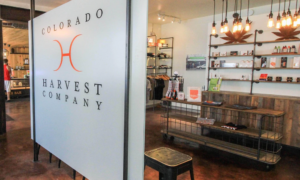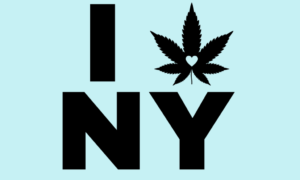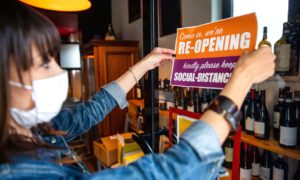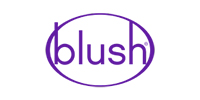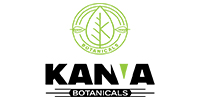Tobacco Paraphernalia? Prove It.

Tobacco paraphernalia is in many cases indistinguishable from cannabis paraphernalia
Tobacco paraphernalia is in many cases indistinguishable from cannabis paraphernalia, especially when products are unconnected to specific consumers. If an item can be used in both lawful and unlawful ways, it seems illogical to classify it as drug paraphernalia, unless the item is connected to illegal activity. Yet the approach of the U.S. federal authorities is the opposite: Absent evidence of intended lawful use, they have no qualms about labeling something as drug paraphernalia.
The Controlled Substances Act defines “drug paraphernalia” as:
“any equipment, product, or material of any kind which is primarily intended or designed for use in manufacturing, compounding, converting, concealing, producing, processing, preparing, injecting, ingesting, inhaling, or otherwise introducing into the human body a controlled substance.” 21 U.S.C. § 863(d).
As readers may imagine, the “primarily intended or designed” part of that definition has been and remains the subject of many a legal scuffle. For many products, it is clear that they can be used with both tobacco and cannabis, but their primary intended use may be hard or impossible to establish. As we recently noted in Goods and Services and Canna Trademarks:
whether [a] lighter or ashtray or rolling paper is used with marijuana or hemp or tobacco is a question of fact that will be determined by the user of the products. Conditions encountered by law enforcement when they seize drugs can in some instances support the characterization of a product as paraphernalia, even in cases where there are legal uses for that same product. However, by definition, such products cannot be drug paraphernalia prior to use, just as guns and cars can only become instrumentalities of crime after someone uses them.
In practice, the feds are untroubled by the fact that eventual use of a specific product may be lawful or unlawful. On the contrary, if they discover any linkage to cannabis, they will have no problem treating a good as drug paraphernalia, possible use with tobacco or other lawful substances notwithstanding. They will do so even when the linkage is tenuous. For instance, in a 2008 ruling letter addressing the importability of certain grinders, U.S. Customs and Border Protection (CBP) noted that “an internet search reveals a vast number of advertisements relating to grinders similar to those imported by [the importer] for use with marijuana or cannabis.” However, there is no indication that CBP considered the number of advertisements relating to similar grinders for use with tobacco.
When faced with allegations that a product’s primary intended use is lawful, the feds will typically give them short shrift, unless they are accompanied by supporting evidence of such lawful use. In the ruling letter discussed above, CBP concluded that “the record does not show or establish that the merchandise is traditionally intended for use with tobacco products.”
There is something unsettling in CBP’s approach. On the one hand, the agency requires importers to demonstrate that their products are intended for lawful use, even when potential legal uses are obvious. Those grinders that were the subject of the ruling letter could be used to grind tobacco or tea, as the importer contended, and this is something that CBP did not deny. Yet CBP will go out of its way to find evidence that supports a finding that an item is drug paraphernalia.
CBP ruling letters document in great detail the sleuthing conducted by its officers across YouTube, Instagram and Facebook. They will not only look at an importer’s own social media, but also follow links found on the same. Just to give you an example of the kind of research findings that your tax dollars fund, check out this ruling letter concerning a desktop vaporizing device called the Saber:
[The importer] shared on their Instagram page a photo of a model using a Saber and a link to the model’s personal Instagram page. On the model’s personal Instagram page, she has posted a video review of the Saber and tagged [the importer]. During the review she vaporizes cannabis with the Saber and states that ‘it conserves a lot of weed,’ and ‘I’m so high.’ The model’s previous March 2, 2020 Instagram post on her personal page is an ‘Official Promo Video’ for the Saber. The video is of the model walking through an alley with the Saber and using it as a smoking device …
We understand that federal law enforcement agencies are tasked with enforcing the laws on the books, but the Controlled Substances Act gives them plenty to go after without having to go fishing online to determine whether an item constitutes drug paraphernalia or not. 21 U.S.C. § 863(d) identifies no less than 15 items that are by definition drug paraphernalia.
Moreover, the legalization of hemp by the 2018 Farm Bill adds a further layer of capriciousness to the application of drug paraphernalia laws to items that have both lawful and unlawful uses. Following the enactment of that law, some cannabis is lawful, period. Trying to ascertain if a product’s primary intended use is with hemp or marijuana is an even greater fool’s errand than trying to distinguish between tobacco and cannabis products.
As with so many other issues that plague our legal system, the real solution to this absurd state of affairs is in the hands of the U.S. Congress. It is high time that lawmakers took a massive pair of scissors to the CSA’s drug paraphernalia provisions, and relieve our overworked law enforcement officers from the long hours they must spend sifting through Insta posts. #smdh
Source: Canna Law Blog

